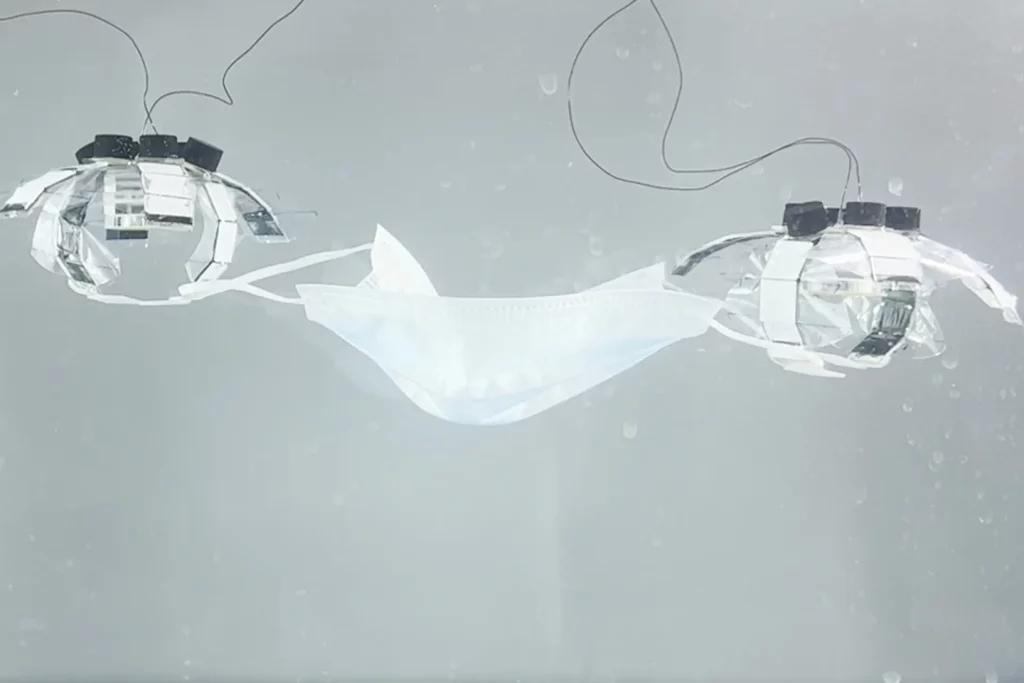In today’s world, environmental pollution is a growing concern that is affecting every living organism on the planet. One of the most serious issues is marine litter, which is not only polluting seawater but also posing a grave threat to marine life. But what if we told you that a robotic jellyfish could help solve this problem? Scientists at the Max Planck Institute for Intelligent Systems in Germany have invented a robot jellyfish that can use its flapping power to clean up garbage on the seabed without touching it. The robot jellyfish is about the size of a palm and consists of a series of six actuators filled with artificial muscles called HASEL.
The Jellyfish moves with the help of Electrodes
The artificial muscle is a bag of oil surrounded by electrodes. When the electrodes are energized, they discharge into the surrounding seawater, which pushes the oil in the oil pockets back and forth, causing the robotic jellyfish to create a flapping motion. This movement generates currents around the jellyfish, sucking up small particles from the seabed, which can be used to remove debris from fragile marine environments such as coral reefs.

What’s more exciting is that the robot jellyfish mimics the movement of real jellyfish in nature, which flap to catch food and obtain nutrients. Unlike other methods that can harm marine organisms, the robotic jellyfish has almost no noise, coupled with its non-contact method, which ensures no negative impact on the marine environment and organisms. It can also collect some fragile biological samples, such as fish eggs. The robot jellyfish can also perform a grasping motion when two actuators approach each other in a pincer-like gesture. With this ability, two robots can work together to pick up more complex items, such as face masks, from the ocean floor.
The only limitation of the current robot jellyfish is that it needs to be connected to a wire for power supply. But scientists are working on solving this problem, and they have installed batteries and wireless communication devices on a sample and let it swim freely in a pond on the Max Planck campus in Stuttgart. In the next step, they plan to add the function to change direction.
RELATED:
- Engineer Combines ChatGPT with Robot Dog, Spot for Enhanced Communication
- Nanowire AI Networks Mimic Human Brain’s Learning and Memory Abilities
- Best Standing Desks in 2023
(Via)







